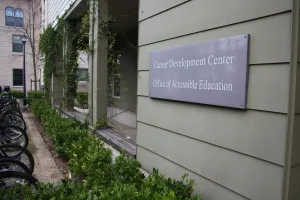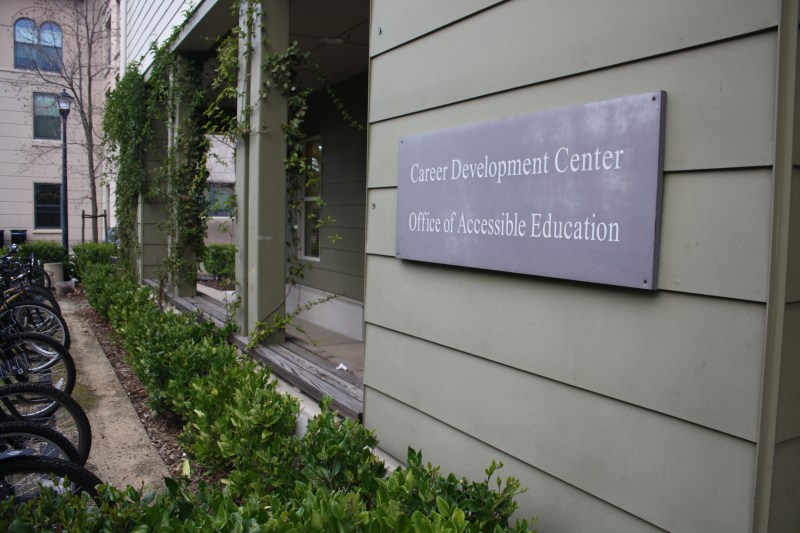Designer suits, chartered plane rides across the globe and million-dollar deals clinched on a daily basis—the finance sector enjoys no dearth of glamour in popular culture.
However, for many students at Stanford trying to make an entrance into the field, the reality isn’t quite as shiny.
Ian Chan ‘14, an international relations and economics double major, first became interested in finance after joining Stanford’s business fraternity, Alpha Kappa Psi, during his freshman year. He decided to apply for a finance internship for the summer following his sophomore year.
“It’s a chance game,” he reflected. “A recruiter going through 500 resumes for five spots in first round—it’s a little bit of a black box, so people apply to many [companies] to maximize their chances.”
According to statistics provided by the Cardinal Recruiting service for fall and winter quarters during the 2012-13 school year, 25 finance companies interviewed for internships on campus, compared to 80 engineering and technology companies and eight non-tech companies.

These numbers, however, include neither the interviews resulting from career fairs hosted by the Career Development Center (CDC) nor those resulting from the job offers administered through Cardinal Careers.
Beverley Principal, a student affairs director at the CDC, noted that interest in finance internships tends to vary with the state of the economy. According to Principal, the number of applications currently seems to be on the rise, as the economy slowly recovers from the Great Recession.
According to the CDC, the top finance companies in terms of student interest are Goldman Sachs and J.P Morgan, with favorite locations including San Francisco, where the work tends to focus more on technology and healthcare, and New York City, where students sample the fast-paced corporate world.
Arduous applications
Chan compared the application process for such internships to that of applying for a spot at a top university.
“The application isn’t long, but it takes time to get through all the electronic applications, and if you do get shortlisted it is 45 minutes of your time that you have to devote to each interviewer,” he said. “The first interviews are usually ‘fit interviews’—questions more about yourself and why you are interested in the company.”
The internship process usually begins with an electronic application, followed by two interview rounds. The first interview is typically conducted on a college’s campus or at the local office of a company, and the second generally takes place during what business insiders refer to as the “Superday.” which can involve up to five interviews in one day at a company’s main offices, generally in New York City, San Francisco or Los Angeles.
First-round interviews frequently feature brainteasers and other logic or math puzzles as means of testing applicants. Chan was asked to solve a riddle involving a disarray of black and white socks in a dark drawer, while Luana Dias Gomes ‘14, an economics major interning at J.P. Morgan this summer, was asked to estimate the weight of a Boeing 787 Dreamliner.
“I had no idea how to do it, but I tried to answer,” Dias Gomes said. “Afterwards, I remember flying to my Superday [in New York City] and thinking about going up to the pilot to ask him how much the airplane actually weighed.
“That haunted me for a while because I couldn’t get the right answer,” she added.
The second-round interview, however, usually focuses on more technical aspects of the trade.
At the time of her Superday, Dias Gomes had not conducted any prior mock interviews—unusual among hopefuls—and had only been to the CDC once, for help formatting and editing her resume.
“I remember that I had two midterms during the week of my second-round interview, and it was also the first time I was interviewing for an actual job, so obviously that was very stressful,” Dias Gomes recalled. “I was asked lots of hypothetical scenarios, [especially about] how you deal with day-to-day stuff.”
An intense experience
Only when applicants have secured their internships, however, does the real work start. According to J.P Morgan’s website, internships offer a “short, intense, possibly exhausting, certainly enjoyable and completely memorable experience.”
Chan described finance internships as being very time-intensive, with 100-hour working weeks treated as nothing unusual.
“These internships are a reflection of the real thing,” Chan said. “[The companies] are very much looking for permanent hires after the summer. Taking in so many interns is an investment on their end.”
At Stanford, sophomore applications for finance internships, such as those of Dias Gomes and Francisco Cortes ‘15, also an economics major, are a relatively new phenomenon. Until recently, students typically decided to take the plunge only after junior year.
“Here at Stanford, people usually start applying their junior year, but at J.P. Morgan you have a lot of high schoolers as interns,” Dias Gomes said. “They have a program in New York that basically trains the kids since they’re in high school.”
Given that Stanford does not have a business or finance major, students largely have to prepare for these internships on their own.
According to Cortes, his preparation included hours spent poring over case study guidebooks, reaching out to people with previous experience in the industry and constantly keeping up to date with the news.
“I wake up everyday holding The Wall Street Journal,” Cortes said. “It’s also about reaching out to people who’ve been in the position before, finding out what [the interviewers] will ask you, what they want to hear from you. I did it both here at Stanford and with friends and friends who are already in the working world.”
For Chan, essential features of his preparation process included learning how financial statements work, conducting mock interviews with his fraternity mentors and reaching out for feedback from first-round interviewers.
Chan commented that, while the CDC has a number of resources for job-searching, those tools are regrettably under-utilized, in part due to the unwieldy nature of the CDC’s website.
“It’s very hard to search for jobs, it’s very cumbersome to load your resume and cover letter,” he said. “It’s just a very cumbersome system.”
Despite these difficulties, Chan argued that the CDC is ultimately a beneficial resource for students, particularly due to their facilitation of recruitment events.
Such events, which are held both on- and off-campus, include dinners, case interview workshops, information sessions and chats over coffee.
Meghan Cress, a recruiting specialist for Bain & Company in the Bay Area, is her company’s primary recruiter for Stanford. She said that about 600 Stanford students apply to Bain each year for both full-time positions and internships.
According to Cress, each Bain office with an internship program will host anywhere from five to 15 interns per year, making for a very competitive recruiting process.
Cress emphasized that Bain’s emphases on solid academic performance, some work or internship experience, leadership and overall well-roundedness reward qualities common to Stanford students.
“Stanford students’ resumes are generally quite impressive,” she said. “In an environment where so many opportunities are available to students, it is good to remember that focusing energy on a few things rather than trying to do everything is often more effective.”
